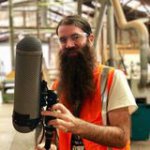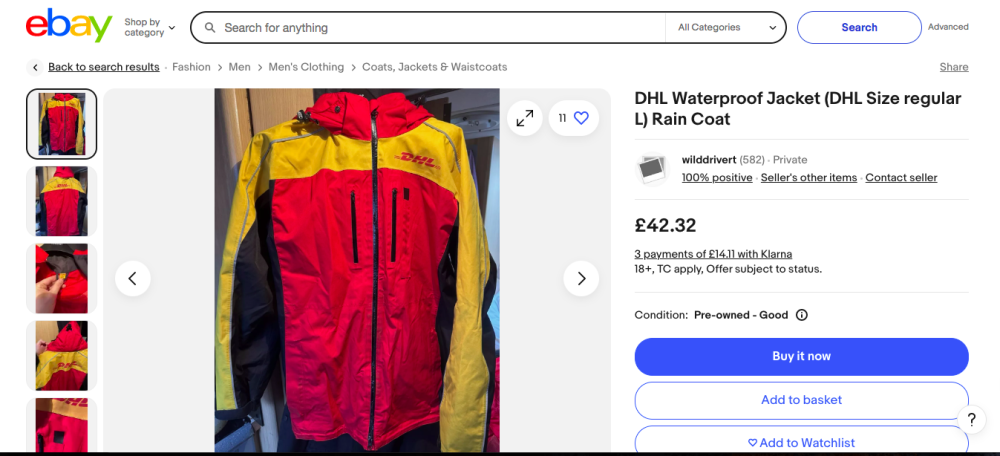Leaderboard
Popular Content
Showing content with the highest reputation on 03/01/2025 in all areas
-
I think we have to keep in mind that we all shoot different things and use and set up cameras in different ways. I have no care who's name is on the top of the camera in my hand and have always used multiple brands at the same time, currently have 1x R6ii, 2x S5iiX and 1x Fuji XH-2s, I have shot Lumix and Canon for like ever, so naturally feel a lot more at home with them, however always curious so will rent gear to try out and sometimes shoot along with main rig on gigs to have identical footage to judge later. I found the Z6iii and the Z8 AF inconsistent, they have a tendency to try to find what's closest to the camera and I had lots of shots where on a talking head either the nose or ear is sharp, the camera will maintain focus and not jump back and forth, the eye AF box is locked on the eye but after import when you look closely the focus point is a few centimetres behind or in front of the eye. Again, it could be how I set up cameras, and I'm sure there are people out there that love their Z8/9 or 6iii... @Andrew I see your other post, You are right, the Z line does have a lot going for it which is why I have been renting them on shoots, (there is no replacement for using the camera on an actual shoot) But it just didn't quite hit it out of the park the way I was hoping for me.4 points
-
I shot two short docs and part of a feature length doc on the GH5 and GH5s and wow, I’m surprised how often I miss those cameras. I had the GH5 with the Sigma 18-35mm and metabones speedbooster. And the GH5s had a few of the m43 Leica Primes and adapted Contax Zeiss glass, also on a speedbooster. Fast, small, light and pack able for air travel. Such a solid kit. Had the GX85 as my little BTS camera and would use it as a back up/3rd angle a lot on interviews. Or mount it up in the ceiling for weird overhead angles. Tiny little 4k beast with surprisingly good IBIS for back then. I do feel like we’ve lost something from that era. GH4 to S1H era was peak LUMIX. Everything back then felt well thought out and I was always blown away with the host of features. These days it’s different. I’m also hoping the S1Rii ends up being worth the purchase, I think it suits me and what I need.4 points
-

Panasonic Lumix S1R Mark II coming soon
Emanuel and 2 others reacted to Andrew Reid for a topic
He uploaded the originals which is good... https://drive.google.com/drive/folders/1obqp8z2FJCVnLswPCDq4MYPdat6va-AQ?usp=sharing S1H I thought didn't really have a moire issue in 5.9K. So perhaps he has found a way to break it.3 points -
I will likely go back and forth on whether the S1RII appeals to me but I recently was reminded not to lust after gear. I've got an S1 and S1H currently and I bought an S5 and eventually an S5II hoping to replace these, sensing size and weight were the only real drawbacks of the S1 bodies. I sold both the S5 and S5II almost immediately, for usability reasons (worse viewfinder and screen) and because of the picture being over-sharp on the S5II. I had somehow convinced myself that a newer camera would spark my creativity, as I am currently in a creative rut. This was misguided. The S1 and S1H are still excellent cameras and they produce an image that feels special to me still. They also feel somewhat indestructible compared to the S5 style bodies. I used them primarily to film a major documentary, along with a GH5 and a slew of other cameras over the years including Canon C300 marks I & II, 6D & 5DIII. In color correction, I learned how little the camera matters compared to what you capture, outside of the quality of life improvements and build quality (the C300II actually broke from use at the hot shoe mount). Even some quality of life improvements should be met with apprehension. IBIS has ruined some of my shots with weird motion artifacts - the days of a loupe and hand grip on my 6D netted some pretty stunning motion. Among all the cameras I've shot with, I found the most usable camera overall was the GH5 - and if I was to embark on a similar documentary project today and had budget for a new camera, I'd probably lean towards a GH7 for its versatility and portability. I think the GH7 actually represents the most unique value proposition in Lumix's line - for run and gun documentary, with 32bit audio and a 12-60 or 12-100 lens, I don't think it can be beat. Of course, I don't want to go through the process of re-acquiring all the MFT glass and adapters I've now sold. For me, the S1RII's reduced size and weight, improved high ISO performance, 32bit audio would be significant quality of life upgrades - but the trade-offs of higher heat sensitivity, lower battery, and a huge hole in my wallet would not be worthwhile. I mean, I'll want one, as is the case with every new camera I see, but will it actually improve my work? Not at all.3 points
-
At least for me the AF works and works and then out of the blue decides to just lock on some where out of the focus box and refuse to let go, or keep focus on the subject ( not just people ) but slightly in front or behind. Funny enough when I had the GH4 and GH5 I used AF, but always know when to just not bother and flip over to MF!2 points
-
Footage up to 30p is taken from the full width of the sensor using the full capture resolution, with a slight crop in to give 60p. 4K (in both flavors) is available at up to 120p with the addition of a further slight crop. Line skipping is used to deliver these 100p and 120p modes. DCI and UHD 4K can also be captured at up to 60p from an APS-C region of the sensor.2 points
-

Panasonic Lumix S1R Mark II coming soon
Emanuel and one other reacted to Andrew Reid for a topic
Nice idea for a test but he's only testing the APS-C modes. On a 24 megapixel sensor we are talking rather low resolutions in 1.5x crop mode - something between 12-15 megapixel. So he is comparing 12 megapixel with no oversampling to 44 megapixel with oversampling. What happens when he does the same in full frame. S1H with AA filter at 6K full pixel readout, versus S1R II at 8K - the result would be much closer. S1R II in full frame at 60fps is pixel binning, which is the worst thing possible as far as moire on fine textures is concerned. So it would be nice to see him extend the test beyond APS-C mode, but then that would complicate the conclusion which isn't as attractive for YouTube videos.2 points -

Rise of the salesmen, Death of the artist
ita149 reacted to Andrew Reid for a topic
Although I can be a bit negative about the current states of camera releases and so on, I just want to say how much I appreciate this forum. A daily fun read and fun to participate in. You folk have created a creative haven with a good technology knowledge, and this is very rare these days. I just provided the platform for it and a blog. It's striking how far it has gone thanks to you lot... I think there are cycles in human history, eras when good wins, eras when bad takes over. No guesses as to which era we are in as a world today. The camera community is a microcosm of reality. Go back 10 years ago and we had a camera community as a whole led by artists, photographers and filmmakers. Now we are in a different cycle, and I look at who is leading it with disdain. We have a bunch of gatekeepers who are all salesman cosplaying as journalists and artists because that's what the industry rewards and priorities with access. Client journalism has taken over from filmmakers and artists. How proud I am that this community is so different. In the face of such mainstream BS on YouTube. BTW - Do you remember when Jordan of DPR/Petapixel threw a big tantrum on this very forum and left for 2 years at the peak of the DSLR revolution / video, before returning with a nicey nice guy attitude like nothing had ever happened? It was based on a fundamental misunderstanding of EOSHD, from his side. I think when a filmmaker features your "content" on their blog it's a compliment and a good thing, not a leeching, or theft, right? But he was feeling insecure... attacked by my previous posts about the rise of the shills on social media. In order to feel targeted you first have to believe you are the victim. But if he stops to think about it and genuinely deep down considers himself the artist/filmmaker he always cosplays as, he would not have felt like a victim at all of anyone's push back against the shills and their excessive gatekeeping. Had he sympathized a little bit why I was "dumping on every reviewer", he wouldn't have had a problem with it. So in the end this tells us something important about influencers like Chris and Jordan - that they themselves sees themselves as defacto salesmen whose job it is to sell. It's their whole identity. So of course he felt particularly personally attacked. Even though I wasn't targeting him. In fact back in 2016 Chris and Jordan hadn't come to mind in my criticism at all. As creatives we need to push back when we see the over-commercialization of a space, or an online community. Don't be afraid to call these guys out.1 point -

What are your feelings about Panasonic S1R II being in the S5 body design?
Juank reacted to Andrew Reid for a topic
Nice long (2 hour!) review from Richard Wong. I've been thinking about the standardisation of body designs at Panasonic. Taking inspiration from Sony they seem to want to design a one-body fits all standardised ergonomics. But the lack of the top panel LCD and the angular body of the S5 Mark II does nothing for me. And I'm wondering when Panasonic will start adding a bit of flair and soul to their designs. If they came up with the S5 Mark II body design as a way of creating a Sony a7 IV mould to then go and do a whole set of other cameras with only minor ergonomic changes, they have done a really bad job. The S5 Mark II body is not flagship material. Sony a7 IV is. The Sony a1 has an almost identical design and ergonomics to the a7 IV, but still feels like a flagship. It's been the same since the Sony a9 being based on the a7 III. The Nikon Z8 is probably the nicest of the bunch I think? Not too small, not too big, top panel LCD, very nice viewfinder hump, feels premium. So in general just the design... what do people think of the direction Panasonic have taken since the S5 Mark II to standardise their bodies? The G9 II of course shares the same basic layout and looks too. Maybe they will break the mould a bit with the S1H Mark II if we ever see it? They could certainly use some imagination at this point.1 point -
1 point
-
The Z8 was a bit of a no go for me, never quite got the AF to work consistantly and while on paper it ticks all the boxes, in use it just was a bit of a let down for me and how I use it.1 point
-
We don't need another Z8; we need better than the Z8 and Slashcam's DR testing already shows that the S1Rii is just that. I took a long look at the Z8 and what turned me off from it was 1) no mechanical shutter option, and 2) not great H.265 implimentation - compression artifacts compared to it's ProRes and RAW options. This was a no-go for me as LOG in H.264/265 is where I live.1 point
-
It will not overheat, have better dynamic range and latitude than the Z8 and have the usuability, ergonomics, sturdiness, battery life and beauty of the original S1H, if it's a true successor and sofore deserving the name of S1HII.1 point
-
Slashcam tested 6K 60p with exellent results on a 4K timeline, almost as detailed and with resolution like 24 to 30p. No moire nor aliasing nor any other artefacts. Readout in that mode was tested with a result of 15.6ms.1 point
-

Panasonic Lumix S1R Mark II coming soon
John Matthews reacted to Andrew Reid for a topic
Is the full frame 4K 60fps on the S1R II actually oversampled from 8K/60p? The sensor is too slow for that. So when he labels it 4K/60fps full frame, I can't help but question it. It's either a crop or binned, it can't be a full frame oversampled mode.1 point -

Panasonic Lumix S1R Mark II coming soon
Emanuel reacted to John Matthews for a topic
No. He was testing other modes too. Look at the bottom of the screen where it says the mode he's testing (29 seconds in) which was full-sensor readout mode, then he talks about the crop modes. That guy doesn't strike me as the "sensational YouTube guy." As of right now, he's got under 500 subs. Clearly, the S1rii does better at not producing moiré than the S1H (at those distances). I'm sure the S1rii will produce moiré at other distances, just not in this example.1 point -

Panasonic Lumix S1R Mark II coming soon
IronFilm reacted to John Matthews for a topic
Back then, capturing detailed video was the priority—and the GH4 made that possible. As a bonus, it also eliminated many of the moiré issues we were dealing with. Over time, our focus shifted to achieving high-quality, detailed video with a shallow depth of field. Later, IBIS became the next major step forward. Panasonic has been at the forefront of all these innovations. The only real drawback was autofocus in video, which eventually became the defining feature on YouTube. This killed their sales. Fast forward to today, and most cameras have nearly everything—but Panasonic still excels in IBIS, video tools, and in-camera photographic features. Their autofocus is only slightly behind, if at all (in fact, they lag in AF far less than other brands do in IBIS, video tools, and built-in photography features). Their image quality is second to none. If there’s something drastically better that justifies a significant price jump, I’d love to hear what it is. Sure, rolling shutter can be an issue. So can slow motion. But even Panasonic would probably agree—if those are your top priorities, you might need a different camera. Personally, I’d take slightly worse rolling shutter and slow motion in exchange for that flip-out, flip-up screen—especially if it means saving a lot of money compared to other cameras with that feature. The "do everything" hybrid camera is not that far off. We're an in-camera ND filter and slightly faster sensor away. I bet Panasonic is going to get there first.1 point -
Sometimes going backwards can even "inspire your creativity"! Tomorrow I plan to shoot some photos of a running race using my ex's old Nikon D901 point
-
Yes, the S1 is the camera I use the most, excellent video quality, no oversharpening or smoothed out details like on the S5II. I have owned all the GH cameras, and for me the best one was the GH5 (and also the GH4). I still use the GH5 a lot. The very organic look of the Open Gate in the GH5 and the possibility to use it at 60fps is great. I was somewhat disappointed by the GH6, G9II and GH7, there is something about detail rendering I don't like, in 4K there is sometimes a lack of detail, of course the GH5 is not perfect either and still has sharpening at 0 in V-log or -5 with 709 profiles, but at least fine details are not altered. In Open gate/5,7K while there are plenty of details on the new cameras I still see a bit of bad sharpening like I on the S5II. Internal Prores raw on the GH7 fix the issue but the files are really huge, need to be recorded in V-log and there is no support for Resolve SOOC. This is why I use the GH5 most of the time with my m43 lenses, never had any issue with AF on the 10-25mm and 25-50mm in good light, can't say the same about the GH6 with low fps recording mode. Special mention to the G9II though, it is really a joy to use with the 20mm f1.7, thanks to the PDAF and the relatively lightweight of this combo.1 point
-

Panasonic Lumix S1R Mark II coming soon
Emanuel reacted to John Matthews for a topic
For video, this is the most important feature of this high MP camera:1 point -
It's definitely within the spectrum of low / mid range when it comes to professional shoots. It's a common enough camera choice for reality tv / docos / corporate videography / etc1 point
-
That's exactly how I feel. They worked on all the things the S1 hurts the most, things that make your life easier on the job. On the downside, I now have to do some serious penny pinching for those 3 grands 😅1 point
-
Rolling shutter will be a situational issue and I agree that more more footage I see, the less concerned I am than from the early reports. Yeah, the middle of the CVP review is disconcerting but this is a very tight crop of the subjects head in 6k open-gate and it really appears to be not significant in many other scenerios that align with how I shoot and what I need. @Jahleh Also agree - super heartening to see some really gorgeous footage. I've not watched everything but I was initially pretty put off by the 8k I saw from PetaPixel - seemed overly sharp with aliasing in the details. So much that I'm seeing now is so much nicer. I may wait until end of June or I might spring for it in early April depending upon the work I have coming up. A few days ago I covered (photo & video) two rallys over six hours at the State House in New York. Profoundly variable lighting, mixed lighting, terrible light quality and hundreds of people in a variety of locations. The S1 is still a champ but when I think about one switch to move from photo to video (vs a dial and two button presses), higher resolution with no lower light penalty, auto focus that I can point to an individual in a crowd and say "stay there" for the next thirty seconds, to be able to walk and have quite good stabilized footage.... I'm excited to not be fighting the camera to get the results, let's just say.1 point
-
Panasonic Lumix S1R Mark II coming soon
Ninpo33 reacted to newfoundmass for a topic
That's why I really don't put any stock in those YouTubers. Even if they weren't getting flown out on trips or given free stuff, they have an incentive to stay on the companies good side because they get tons of views for their channels. Unfortunately it's part of the marketing game these days, and so I begrudgingly applaud Lumix for at least casting a wider net and getting non-Lumix YouTubers to promote it. That's good for the system. Still, we shouldn't discredit those who've taken the camera, used it in professional settings, gone in depth working with the images, and have been overwhelmingly positive. I suspect as more professionals get the camera in their hands and use it it will be viewed very well. I'm really not trying to come off as a Lumix fan boy, there are things that I don't like (I won't complain about the overheating issues again, as anyone that reads my posts knows my feelings on that haha) but as someone who has been nervous about Lumix I see this release as a positive step and am, for the first time in a while, excited about what comes next and am relatively hopeful. It was a hard couple of years there, but we're seeing progress being made.1 point -
I can understand how some of the reviewer YouTools can get a bit overexcited: Hello this is LUMIX calling. Would you like a free all expenses paid trip to Norway? You would, great. Would you also like to keep and take away the camera that you will be gifted? OK cool, we thought you might. No, you are not obliged to say nice things but next time we plan one of these trips… - They say the weather was not great on this trip but regardless, all I have seen is a few clips of each other on the same boat and a couple of reindeer. A bit weird, but fortunately a few who are actual working filmmakers and photographers, took the time to then go and shoot some real material which is low beginning to appear. As with the S9, give it a few weeks and it’s going to be quite well regarded I think. Once we have all got over the slightly disappointing dull design and the overhyped RS issue. I think…1 point
-
Panasonic Lumix S1R Mark II coming soon
Ninpo33 reacted to Caleb Genheimer for a topic
Of course. I do think @Andrew Reid is spot on in pointing out that the S1RII’s physical design is uninspired. Even if all else remains equal, LUMIX desperately needs to find their video-centric camera body format. Sony’s FX line is walking off with that segment, even without including open gate. I do believe that there’s a sizable market still hanging out sub-$5K, and BMD could quickly walk away with a large slice of the pie. What they don’t cover, the FX line covers very nicely. The Sonys are feature-rich and maximalist in terms of including hybrid type features on top of the video-first format. BMD sits in an interesting place where they keep things simple/straightforward in a way that is heavily focused on streamlining cinema work. They're still building up trust on reliability and build quality, but there’s traction on that front… and at some point, the price point with what they offer is just too good to ignore. the 12K is $7K, and the Pyxis? Almost 1/3rd that price. I find it hard to believe they’re not aiming to land something in the middle, just a touch over $4K. You’re on a good track with the S35 cut-down of the 12ak sensor. I also wonder about simply binning the existing sensor, to keep the data rates within reason for basic cards, and the processing needs within the means of a lesser pipeline, and the cooling requirements down. Presumably BMD could also do RGBW with a larger photosite arrangement, to bring the resolution down. It’s pretty obvious that the 12K is “look what we can do,” and it’s gonna trickle down over time. Again, I hope it spurs LUMIX and others to push for better CMOS tech, because they’re all capable of building good cameras. I do really like what LUMIX has put out on a number of occasions. The S1H was the only camera to put a proper OLPF on the IMX410 until Pyxis just recently. The GH5S with dual native ISO and V-Log L in such a small form factor was a true joy to work with. And the GH2 had a really lovely look back in the day. The S1RII is sitting in a very strange zone. High resolution. High readout speed. The big standard color and dynamics that come with decent Sony CMOS these days. It’s not a bad camera. It’s just not remarkable either. I guess I’m just glad the last couple years I’ve pivoted to buying glass, because I don’t feel like I’ve missed out on any cameras in that timeframe.1 point -
Panasonic Lumix S1R Mark II coming soon
Ninpo33 reacted to Caleb Genheimer for a topic
The real challenge is that until very recently, proper full frame sensor tech has been extremely stagnated. Even Canon, who make their own sensors, went bigger and ditched their lauded DGO in the process. Sony, who makes most everyone else’s sensors, hasn’t done much since shifting to BSI. Panasonic had Dual Native ISO, now it’s been an option for everyone to leverage lately. But ultimately, if you want a 24X36mm video sensor, it’s gonna top out at ~13 stops of DR (maybe half a stop more than that thanks to some highlight recovery and/or noise reduction.) The market has tightened up, sure, but the core technology has also provided very low motivation for existing users to upgrade. Most of the changes have been in tertiary areas like autofocus and ergonomics. Those are important in some contexts, sure, but they’re not paradigm shift improvements. That’s what is needed for market share to shift in a company’s favor. I have a small amount of hope for LUMIX from two things: the shuttering of Varicam, which moved their team into the LUMIX department, and the recent (even if half-baked,) collaboration with Arri. Both bring an insight into a camera ethos that differs from what LUMIX have been releasing up to this point. Arri has also been feeling market shrink, which could mean a window of opportunity for LUMIX to deepen that relationship and do something interesting in concert with Arri. But the window is probably only 2-3 years at the very most, thanks to the elephant in the room: BMD’s 12K RGBW sensor has just demonstrated a paradigm shift. If you already have some cine batteries and the right memory cards, you can have that thing shipped, powered, and recording blindingly impressive footage for only $7K. That may seem expensive, but not when it is very nearly on par with an Alexa LF. And the real kicker-time-ticker? It ain’t gonna get MORE expensive, I can tell you that for certain. BMD surely has a roadmap already in place to reach economy of scale with that tech, and we’ll likely see it in Pyxis/Pocket price point cameras in under 5 years. Everybody else better hope Sony’s sensor development team has been saving something in their back pocket, because now’s the time, or everyone’s going to get outplayed in the not so distant future.1 point




